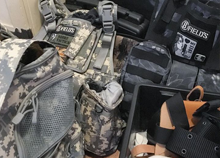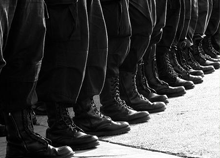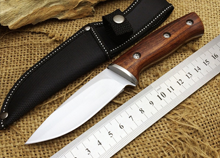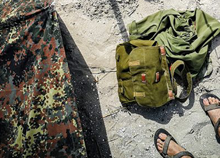Size charts
Size charts
Military sizes are more accurate than civilian sizes in general. If you measure yourself carefully, you'll get fitting clothing. There's no reason not to order online.
- Overall length is measured with shoes off.
- Waist is measured at the navel.
- Chest is measured just below the armpits.
- Inner seam, in trousers is the seam of the leg, that runs from the crotch to the ankle. It's usually measured from your pants, not from your body.
- When taking measurements, don't add some just to be sure. Take the exact numbers. If you seem to get varied results, measure yourself five times and get the average.
- As in almost every country in the world, we give our information in the metric system. If you find this hard, use an online conversion software. Best idea would be to find out metric numbers for your own measurements, so you only need to use the conversion once.
International size charts
Different apparel use different size systems. Below are some of our most common size systems deciphered:
- Bundeswehr size charts
- US jackets sizing system (Medium Regular etc.)
- US Trousers sizing system (Medium Regular etc.)
- Austrian jacket size chart (96-100/III-VI etc.)
- Austrian trousers size chart (96-100/III-VI etc.)
- East German Army (NVA) sizes (e48G, 52K etc.)
- European sizing system, jackets (46,48,50,etc)
- European sizing system, trousers (46, 48, 50,etc)
- British Army Size Chart
Gloves

Glove size is the circumference of your hand measured around the widest point of your palm. If you measure in inches, the result is your glove size. If you're metric, divide the measurement by 2,54.
The average adult male hand is 23 cm, so 23 / 2,54 = 9.06. The correct glove size in this example is 9.
Headgear
Head wear measurement is the circumference of the crown, measured around the skull, about one centimeter above the ears. Make sure to measure accurately - keep the measure tape tight. Generally, you'll want a hat that is not too small - 1 cm wont make much difference though. Some headgear (especially berets) will loosen and "grown in size" when used. This can be accounted for by ordering one size smaller.
| cm | inch | Common |
|---|---|---|
| 54 cm | 6 3/4 | S |
| 55 cm | 6 7/8 | S |
| 56 cm | 7 | M |
| 57 cm | 7 1/8 | M |
| 58 cm | 7 1/4 | L |
| 59 cm | 7 3/8 | L |
| 60 cm | 7 1/2 | XL |
| 61 cm | 7 5/8 | XL |
| 62 cm | 7 3/4 | XXL |
| 63 cm | 7 7/8 | XXL |
| 64 cm | 8 | XXXL |
Shoes
Here is a general sizing table provided by WELLCO. The size chart helps compare US sizes with the European sizing (French Size) and vice versa.
The correct manner to measure your foot is to trace your footprint on a piece of paper with a pencil and then measure the dimensions. Another measurement method is to determine the dimensions of properly fitting insoles. Most shoes come with insoles, but if not included insoles can be bought separately. The link above contains information how to how to compare feet and insoles. US shoe sizes are measured in lenght and width.
Take your time when measuring and choosing the right size, as millimeters count (especially international customers). If you are not certain about your size contact us for assistance.














